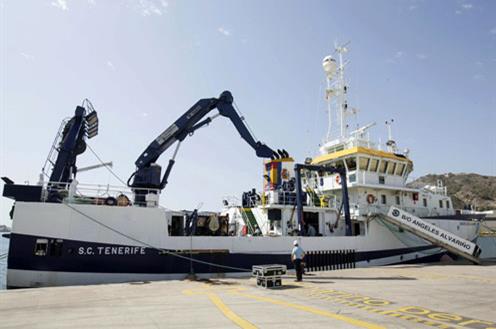The second scientific expedition to the wreckage of the vessel ‘Nuestra Señora de Las Mercedes’ (Our Lady of Mercy) began last week out of the port of Cartagena, organised by the Ministry of Education, Culture and Sport, in collaboration with the Spanish Oceanographic Institute and the Spanish Navy.
The initial goals of the project includes documenting the current state of the remains of the wreckage and the state of the entire archaeological wreckage site; suitably positioning all the remains where they are located; cleaning those parts of the wreckage that are of great scientific interest in order to increase knowledge and documenting, as far as possible, the operations that may have been carried out when the company Odyssey plundered the remains, distinguishing this from the phenomenon of the sinking of the frigate in 1804, among others.
In order to carry out these tasks, the vessel ‘Ángeles Alvariño’ set sail with a team of 13 people comprising of scientists and technicians, headed up by the Director of the ARQUA Underwater Archaeology National Museum, Iván Negueruela, including personnel from the museum, from the Spanish Oceanographic Museum, the Naval Museum of the Spanish Navy, experts in handling remote robotic submarines – known as ROVs (Remote Operated Vehicles), and a film crew who will produce a documentary to spread knowledge of the research activities.
The campaign will last approximately a fortnight depending on the climatic conditions of the sea.
It should be pointed out that the overriding goal of the expedition is to raise awareness of the importance of caring for our underwater heritage within the framework of the 2001 UNESCO Convention.
The Nuestra Señora de las Mercedes was a Spanish Navy frigate which was sunk by the British off the south coast of Portugal on 5 October 1804 during the Battle of Cape Santa Maria. The Spanish frigate was part of a small flotilla sailing from Montevideo to Cadiz, transporting silver, gold, vicuna, cinnamon and quinoa. The other ships in the flotilla were the Medea, Santa Clara and Fama.
A single shot from the HMS Amphion, commanded by Samuel Sutton, hit the ship’s magazine causing an explosion that sank the ship. 250 crewmen were lost, and 51 survivors were rescued from the sea.





